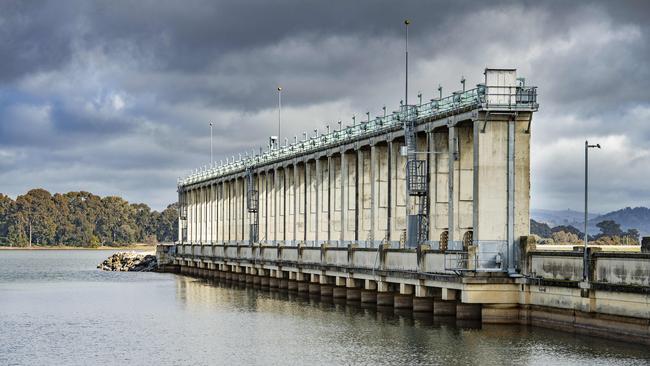Between 5000-6000 megalitres down the Murray River daily for the environment
Inflows into Hume Dam have been some of the lowest on record but up to 6000 megalitres is being released daily purely for the environment.
One of southern Australia’s biggest water storages has dipped below 60 per cent as a dry spring and increased demand for irrigation water starts to bite.
Hume Dam was holding 58.5 per cent of its capacity early this week with 1760GL, well down on the 2812ML in the storage this time last year.

And it is dropping by the day - early this week, Hume Dam was releasing 16,891ML a day, compared to 15,541ML this time last year, and will be close to 20,000ML a day by mid week.
Southern Riverina Irrigators chief executive officer Sophie Baldwin said the releases were very concerning for the year ahead.
“Reducing volumes undermine farming confidence especially when it comes to making business decisions around maximising production,” Ms Baldwin said.
“Complex rule changes have resulted in the majority of this water and inflows set aside to environmental water managers.
“Environmental water is important but so is staple food production and we run the real risk of being net importers of staple foods we eat everyday including dairy, rice and wheat -commodities which should be grown and produced here in Australia supporting our rural communities and feeding the world.”
A spokesman for the Murray Darling Basin Authority said of the current releases from Hume Dam, between 5000-6000ML a day were for environmental water “to support inundation of the Barmah-Millewa Forest and environmental outcomes along the length of the River Murray”.
The spokesman said unregulated inflows into Hume Dam for the period from June to October were some of the lowest on record.
Goulburn Murray Water resource manager Dr Mark Bailey said lack of rain and high irrigation demand had seen the levels of many of its water storages decline over the past year.
“Water availability is still strong due to high rainfall in recent years,” Dr Bailey said.
“Irrigation demand is therefore likely to remain high while the dry weather persists.
“Despite some rainfall in late October, catchments across northern Victoria are still drier than
usual for this time of year.”
In the GMW storages, Lake Eildon is 86 per cent full, and is expected to start boosting its releases from an average of 3000ML a day to 4500ML by the end of the week. Normally Lake Eildon has 175GL of inflow in October, but this year, it was less than half that at 76.5GL.
Lake Eppalock is currently 80 per cent full compared to 95 per cent full at the
same time last year, while Cairn Curran Reservoir is currently 61 per cent full compared to 92
Further north, Burrinjuck Dam was 73.2 per cent of capacity early this week and Blowering was 66.6 per cent.




